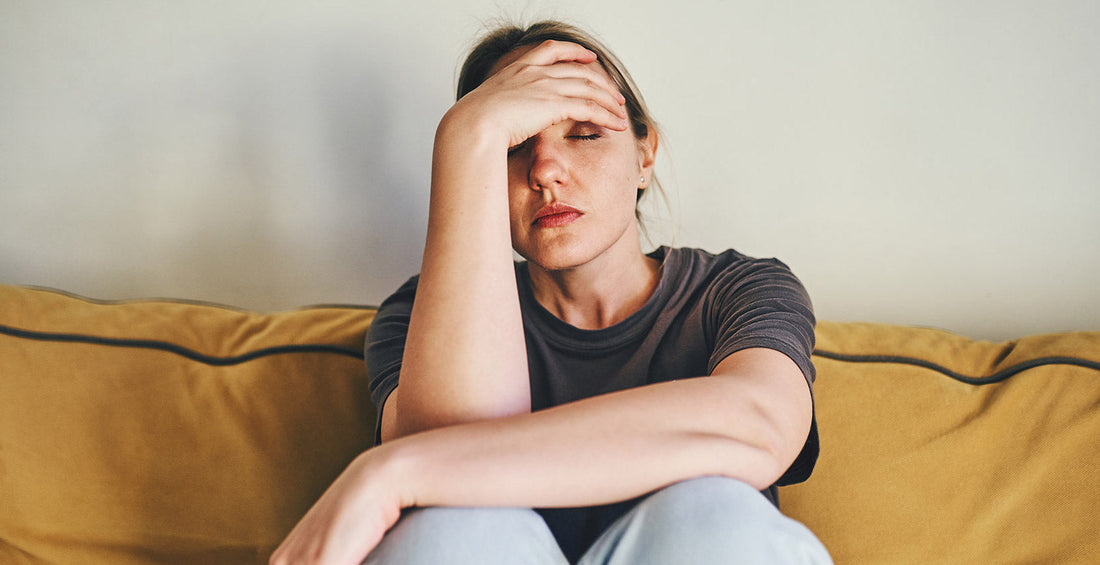
How to Recognize and Relieve Migraine Symptoms: The Complete Guide
Migraines affect about 12% of the global population, roughly one in eight people. Yet, migraines are often misunderstood and underestimated. Many people confuse a regular headache with a migraine or miss the early warning signs that could reduce the severity of an attack.
This guide will help you understand migraines, identify migraine symptoms, recognize common migraine triggers, and discover effective strategies to manage migraines in daily life.
What Is a Migraine?
A migraine is a neurological disorder marked by recurring, intense headaches, often accompanied by physical and cognitive symptoms. It’s not just “a bad headache”—migraines affect the nervous system, blood flow in the brain, and sensory sensitivity.
According to studies published in the Neurology Journal and the Mayo Clinic, migraines can last 4 to 72 hours, significantly impacting work, social life, and daily routines.
Main Migraine Symptoms

- Throbbing pain on one side of the head (usually frontal or temporal)
- Extreme sensitivity to light (photophobia) and sound (phonophobia)
- Nausea and vomiting
- Severe fatigue and difficulty concentrating
- Aura: visual or sensory disturbances before or during the migraine
💡 Tip: Keep a migraine journal to track your symptoms and identify triggers.
Types of Migraines
Migraine Without Aura
The most common type, characterized by attacks without warning signs and moderate to severe throbbing pain.
Migraine With Aura
This type involves visual or sensory symptoms beforehand (zigzag lines, flashing lights, tingling) and can last 20 minutes to 1 hour before the headache. Recognizing an aura can help you anticipate the pain.
Chronic Migraine
Chronic migraines occur on more than 15 days per month, with a major impact on daily life. They often require a combined approach, including medications and natural methods.
Identifying Migraine Triggers

Migraines can be triggered by various factors. Recognizing them is key to reducing frequency and intensity. Common triggers include:
- Stress and strong emotions: anxiety, overwork, mental fatigue
- Irregular sleep: too little, too much, or inconsistent schedules
- Diet: chocolate, caffeine, aged cheeses, alcohol
- Dehydration: drinking less than 1.5 liters of water/day increases risk
- Hormones: menstrual cycles, pregnancy, menopause
- Environmental factors: bright light, noise, strong smells, weather changes
💡 Tip: Keep a “migraine diary” to track your triggers and anticipate attacks.
According to research from the National Institute of Neurological Disorders and Stroke (NINDS), keeping a detailed migraine diary can significantly help in identifying personal triggers.
What to Do During a Migraine
Natural Approaches
For many people, simple steps can help reduce migraine intensity:
Migraines can sometimes be eased by using a cold hat on the forehead or a warm cervical cushion on the neck, depending on which provides relief. Resting in a quiet, dark room, gentle massages of the temples, neck, and shoulders, staying hydrated, and practicing breathing exercises or meditation can also help.
Preventive Lifestyle Habits
Adopting healthy daily habits is crucial to prevent migraines:
Maintain a regular sleep schedule, eat a balanced diet with proper hydration, engage in light exercise like walking, stretching, or yoga, and avoid known triggers such as excessive caffeine, alcohol, or certain foods.
Medication Options (If Needed)
- Anti-inflammatory or pain-relief medications as recommended by a doctor
- Triptans or migraine-specific medications under medical supervision
- Preventive therapies for frequent migraines (neuromodulation, prophylactic medications)
Advanced Tips for Living With Migraines
- Daily planning: organize your day around peak stress periods
- Workplace lighting: avoid fluorescent lights, use blue-light filters
- Regular breaks: micro-breaks to relieve muscle tension
- Supplements: magnesium, riboflavin, coenzyme Q10 (consult your doctor first)
FAQ: Common Migraine Questions

Q: Can migraines be completely prevented?
A: No, but reducing triggers and maintaining a healthy lifestyle can significantly lower attack frequency.
Q: Cold or heat—which works better?
A: It depends on the person. Cold helps reduce inflammation and pain, while heat relaxes tense muscles.
Q: When should I see a doctor?
A: If attacks are frequent, severe, changing in pattern, or affecting daily life.
Q: My job is stressful—what can I do?
A: Manage stress through micro-breaks, meditation, breathing exercises, and follow your doctor’s advice if needed.
Inspiring Testimonial
Julie, 32, suffered from migraines several times a month. By identifying her triggers, adjusting her sleep, and using a therapeutic hot/cold migraine cap during attacks, she reduced their intensity by 50% and regained peace of mind in her daily life.
Conclusion
Migraines are more than just headaches. Recognizing symptoms, understanding triggers, and applying appropriate strategies can transform your daily life.
For targeted relief, discover our therapeutic hot/cold migraine cap, designed to quickly ease migraine pain and help you manage attacks more effectively.

